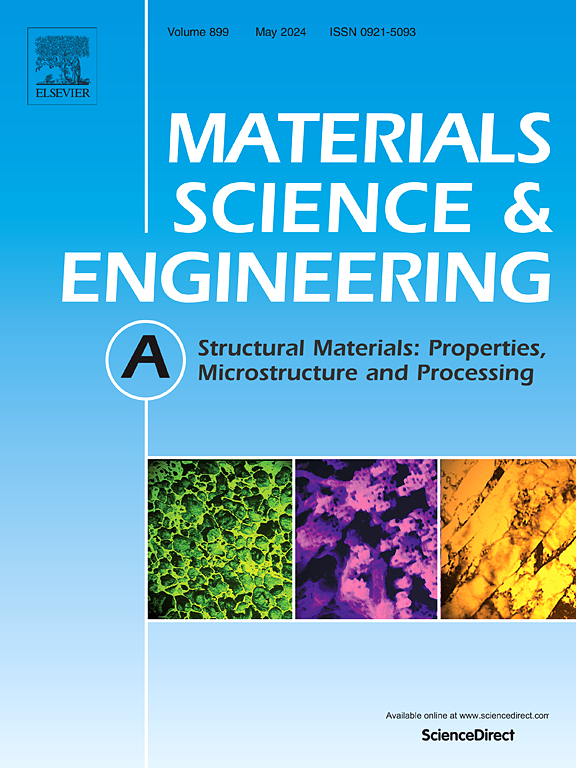In situ nano-oxides and magnetic field engineering enable exceptional strength-ductility synergy in additively manufactured AlCoCrFeNi2.1 eutectic high-entropy alloys
IF 6.1
2区 材料科学
Q1 MATERIALS SCIENCE, MULTIDISCIPLINARY
引用次数: 0
Abstract
Eutectic high-entropy alloys (EHEAs), exemplified by AlCoCrFeNi2.1, offer a promising pathway for developing alloys with exceptional strength–ductility synergy due to their unique microstructural features and deformation mechanisms. Building on these characteristics, this study proposes a strengthening and toughening strategy for additively manufactured AlCoCrFeNi2.1 EHEA by integrating in situ nanometer-scale oxides with the assistance of a magnetic field. The results indicate that the application of a magnetic field refines the columnar grain width (reducing it by 44.9 %), weakens the texture intensity, but increases the dislocation density of the alloy. The external magnetic field does not alter the types of microstructures (FCC/L12 phase, BCC/B2 phase, and nanometer-scale oxides); however, it refines the lamellar spacing, eliminates non-lamellar regions, and increases the volume fractions of the BCC/B2 phase and nanometer-scale oxides. These microstructural evolutions activate multiple strengthening and toughening mechanisms. Consequently, the application of an external magnetic field enhances both the tensile strength and elongation, reaching 1591 MPa and 23.5 %, respectively, thereby achieving an outstanding strength–ductility synergy.
原位纳米氧化物和磁场工程在增材制造的AlCoCrFeNi2.1共晶高熵合金中实现了卓越的强度-延展性协同作用
以AlCoCrFeNi2.1为代表的共晶高熵合金(EHEAs)由于其独特的显微组织特征和变形机制,为开发具有优异强度-塑性协同作用的合金提供了一条有希望的途径。基于这些特性,本研究提出了一种增材制造的AlCoCrFeNi2.1 EHEA的强化和增韧策略,即在磁场的帮助下集成原位纳米级氧化物。结果表明:外加磁场使合金柱状晶粒宽度细化(减小44.9%),织构强度减弱,但位错密度增大;外加磁场对FCC/L12相、BCC/B2相和纳米级氧化物的微观结构类型没有影响;然而,它细化了片层间距,消除了非片层区域,并增加了BCC/B2相和纳米级氧化物的体积分数。这些微观结构的演变激活了多种强化和增韧机制。因此,外加磁场增强了材料的抗拉强度和伸长率,分别达到1591 MPa和23.5%,从而实现了优异的强度-延性协同效应。
本文章由计算机程序翻译,如有差异,请以英文原文为准。
求助全文
约1分钟内获得全文
求助全文
来源期刊

Materials Science and Engineering: A
工程技术-材料科学:综合
CiteScore
11.50
自引率
15.60%
发文量
1811
审稿时长
31 days
期刊介绍:
Materials Science and Engineering A provides an international medium for the publication of theoretical and experimental studies related to the load-bearing capacity of materials as influenced by their basic properties, processing history, microstructure and operating environment. Appropriate submissions to Materials Science and Engineering A should include scientific and/or engineering factors which affect the microstructure - strength relationships of materials and report the changes to mechanical behavior.
 求助内容:
求助内容: 应助结果提醒方式:
应助结果提醒方式:


